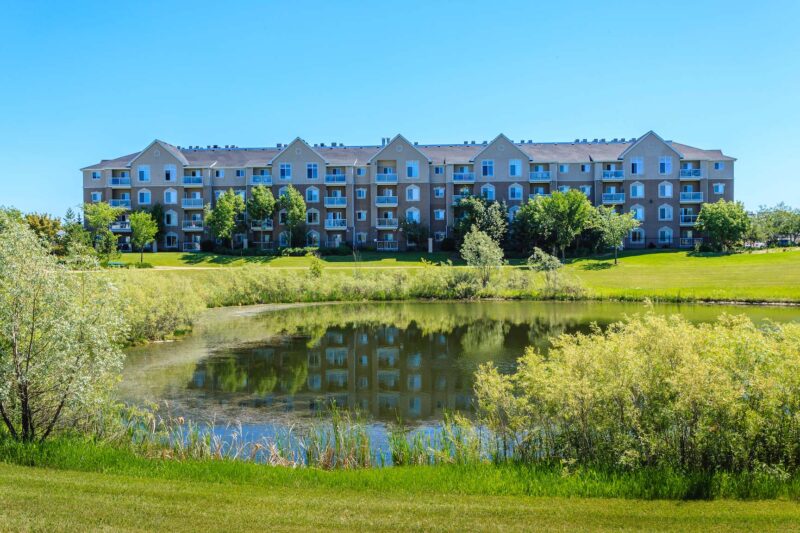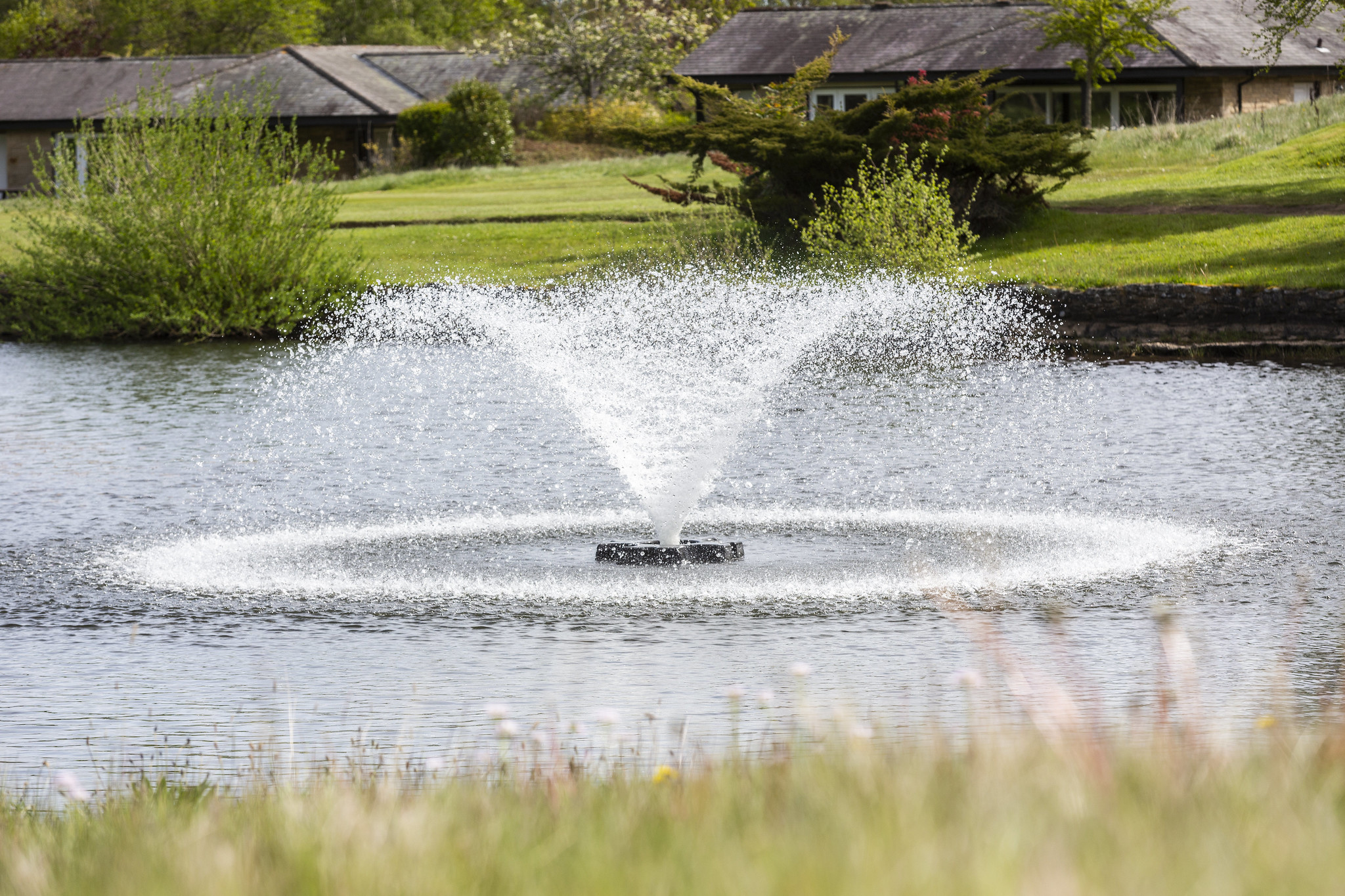Change in regulations affects SuDS in housing developments
What do the new sustainable drainage systems mandates mean for UK housing developers?
The UK government has announced it will amend the Flood and Water Management Act 2010 to make sustainable drainage systems, referred to as SuDS, mandatory for all new housing developments by 2024.

Awareness for sustainable drainage systems and their implementation is increasing among practitioners and regulators alike. Over time, knowledge and experience has grown steadily across the sector.
Therefore, it’s important best practice is shared to promote improved understanding and high-quality SuDS that deliver multiple benefits. In this article, we’ll turn our attention to the question:
Why should housing developers and builders consider proper water management for run-off lakes during the build phase? First, though, let’s ensure we understand what we mean when we say SuDS?
What are SuDS or sustainable drainage systems?
SuDS aim to manage surface rainfall run-off by controlling the rate and volume of run-off from the site. This, in turn, relieves pressure on existing sewerage systems by mimicking natural drainage as closely as possible.
Used effectively, SuDS can help local authorities, planners, architects, and developers deliver greener infrastructure and therefore improve sustainability. Though SuDS are often thought of in isolation, they should be considered as part of the main build.
What are the benefits of SuDS for new housing developments?
Sustainable drainage systems (SuDS) present an opportunity for developers to add value to new build schemes and to help meet local planning requirements for sustainability and the management of flood risk.
According to Susdrain, an independent resource database established by CIRIA, benefits of adopting SuDS include:
- Speeds up the approval process
for new developments
Embracing a well-designed SuDS scheme encourages a faster approval process and facilitates positive planning outcomes. - Saves money in the long run
A Cambridge housing development was reported to be 11 percent cheaper to construct than a comparable traditionally-drained site; another development in Leicestershire was also reported to be 16 percent cheaper. - Improves aesthetics of developmentsSuDS enrich the aesthetic and recreational value of a development, promote health and well-being, and support green infrastructure. Ultimately, making it a more attractive and desirable place to live, work, and play.
- Offers a greater return on investment (ROI) Land value and house prices located next to high quality SuDS components, incorporating well maintained open space such as ponds, swales, and basins, typically attract up to a 10 percent premium on the selling price.
- Could reduce maintenance costs Integrating SuDS into a new site not only ensures the best use of space but could reduce the costs of maintenance. For example, costs to sustain the SuDS scheme in Lamb Drive, Cambridge, were £38 per property per year – 4% cheaper than the average equivalent for a traditionally drained system.
The role of water management for SuDS
There are four pillars to SuDS – water quality, water quantity, amenity and biodiversity.
Water quality is about controlling the quantity of run-off to support the management of flood risk and maintain and protect the natural water cycle. Water quality is about managing the quality of the run-off to prevent pollution. Amenity refers to creating and sustaining better places for people, and biodiversity is about creating and sustaining better places for wildlife.
With regulations brokering no option but to consider SuDS, what’s left is how to manage the water when planning or specifying them. Early consideration will help deliver a cost-effective scheme with the best results. Otterbine’s aerators can help with numerous aspects in relation to proper water management, such as:
- Water quality
- Biodiversity and ecology
- Groundwater recharge, improved water availability
- Rainwater harvesting
- Health and wellbeing – physical, emotional, and mental health benefits from recreation and aesthetics
- Attractiveness and desirability of an area

The role of aeration and water management for SuDS
There are four pillars to SuDS: water quality, water quantity, amenity, and biodiversity.
Water quality is about managing the quality of the run-off to prevent pollution. Water quantity means controlling the quantity of run-off to support the management of flood risk to maintain and protect the natural water cycle.
Amenity refers to creating and sustaining better places for people, while biodiversity means creating and sustaining better places for wildlife.
With regulations brokering no option but to consider SuDS, what’s left is how to manage water when planning or specifying them. Early consideration, therefore, will help deliver a cost-effective scheme with the best results.
Otterbine’s aerators, supplied by Reesink, can help with numerous aspects in relation to proper water management, such as:
- Water quality
- Biodiversity and ecology
- Groundwater recharge, improved water availability
- Rainwater harvesting
- Health and wellbeing – physical, emotional, and mental health benefits from recreation and aesthetics
- Attractiveness and desirability of an area
How to choose the right aeration system for with SuDS
Cleaning the water is a vital part of SuDS management, and it’s easily done by installing an Otterbine aerating system. Moreover, protecting the environment from surface water run-off contaminated with hydrocarbons and particulates is a critical process in wider, integrated surface water management.
Since stormwater surges can dislodge and carry high concentrations of pollutants from exposed areas, choosing the right system is critical. But it will depend on the amount of aquatic vegetation, the visual effect desired, and the power available.
When determining aeration versus aesthetic needs, know that aeration systems should provide a minimum of 2.2lbs or 1 kg of oxygen per horsepower hour, and should produce pumping rates of 400 GPM or 86m3/hr per horsepower.
Recommended sizing is 2HP per surface acre for water quality management. Otterbine products operate 20 percent more efficiently when compared to competitive brands and are constructed of the highest quality materials that are built to last, ensuring years of hassle-free operation.
To learn more about how Reesink Hydro-Scapes and Otterbine can support SuDS, call 01480 226800 or visit reesink-hydroscapes.co.uk
